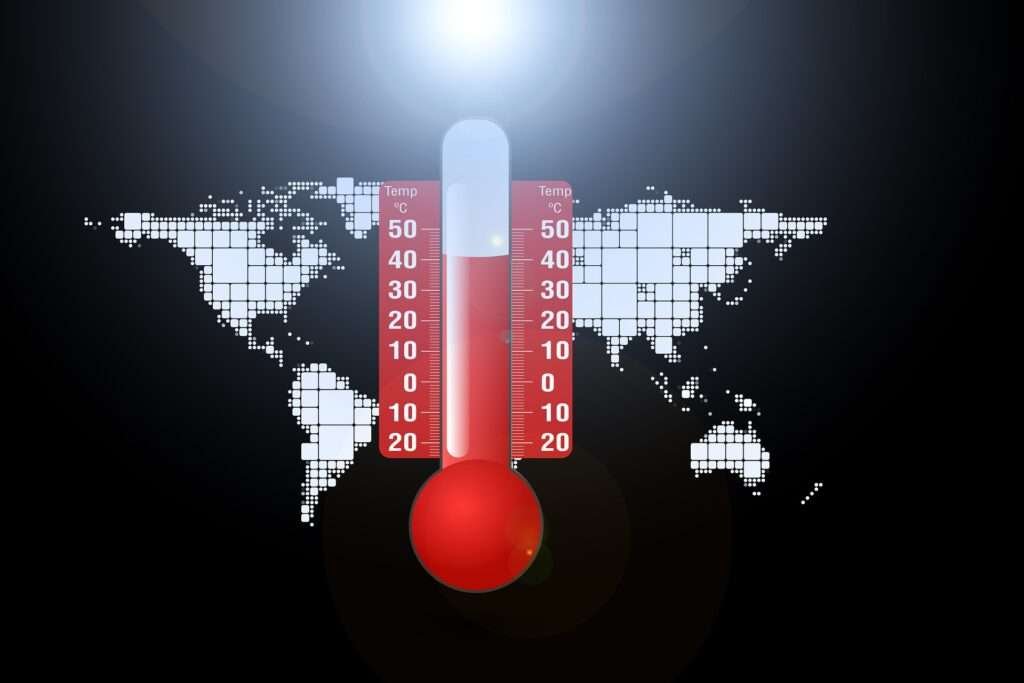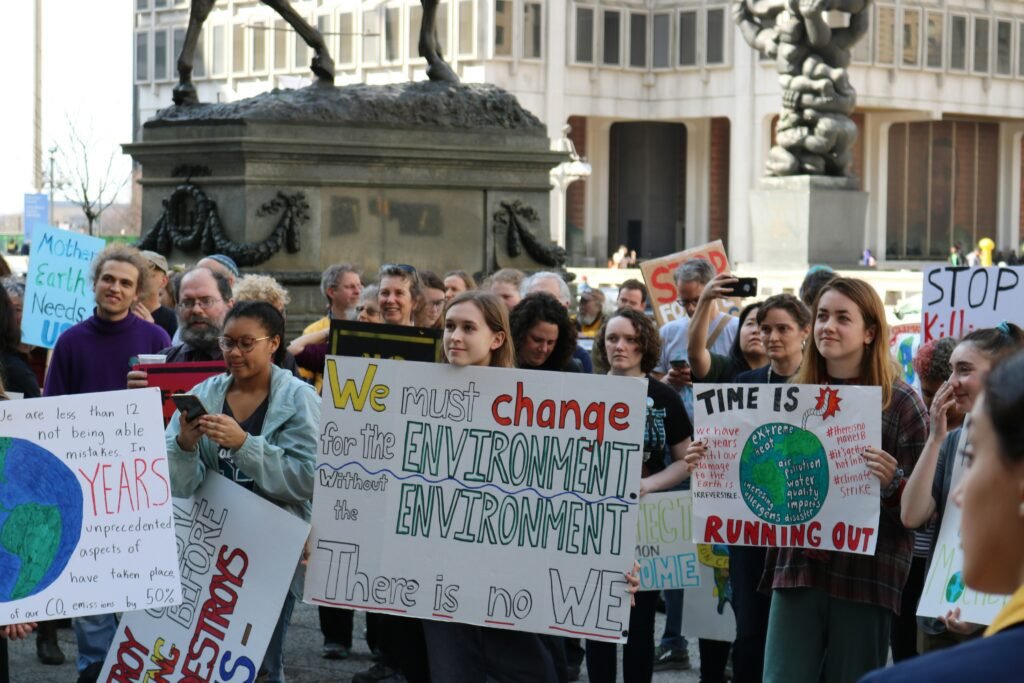Changing the Earth in a Awful Way

Table of Contents
Global Warming is the Gradual increase in the temperature of earth due to different kinds of Green house gases produced by Human activities. The greenhouse gases include the carbon dioxide, methane, nitrous oxide and fluorinated gases. The greenhouse gases have the potential to trap the heat in the atmosphere and keep Earth warm. They capture the infrared radiations released by the surface of Earth and make the atmosphere warmer. A fact states that without greenhouse gases, the Earth would have been a frozen planet. So, the concern is not the presence of the greenhouse gases but the human activities which are contributing to the rise of the same.
Factors Responsible for the Rising Temperature of the Earth
Apart from the greenhouse effect, natural causes contribute to global climate change. Internal climate system changes in the Earth, such as El Nino and La Nina, affect global temperatures through ocean-atmosphere interactions lasting several years. Small changes in Earth’s orbit impact sunlight received and seasonal distribution. Geothermal energy from heat and decay of radioactive compounds below Earth’s surface also contributes to rising temperatures. Additionally, volcanic eruptions cause climate changes.
Global Climate Change Leads to Various Problems
Over the years, the climate of the Earth has changed considerably. The Earth is warming. The small changes in the average temperature of the planet can lead to dangerous shifts in climate and weather. This is quite evident from the fact that there have been significant changes in the patterns of rainfall at certain places. These have resulted in droughts, floods or intense rains. The oceans are warming and becoming more acidic. The glaciers are melting, leading to the rise in the sea levels. The global climate change has led to the variations in the seasons, which have further led to the changes in the behaviour of different species.
If not checked timely, global climate change may lead to various problems. few of which include
- Spread of vector borne diseases due to increase in weather events such as hurricanes, tornadoes, heavy rainfall and heat waves,
- An imbalance in the natural ecosystem,
- Expansion of sub-tropical deserts,
- Acidification of the oceans,
- Affect on the basic necessities such as water supplies, electricity and agriculture.

Different Ways to Control the Problem of Global Warming
All these hint towards a dire need of the urgent steps to be taken in order to reduce the greenhouse effect.
- People can make a difference by changing their everyday habits and lifestyle.
- The problem of global warming can be controlled by minimizing the emission of greenhouse gases into the environment.
- The practice of deforestation needs to be strongly discouraged. Instead, the focus should be on the plantation of more trees and plants. The trees and plants absorb the carbon dioxide present in the atmosphere.
- The educational institutions and NGOs can create awareness among the children and people regarding the problem of global climate change. The more is the awareness, the more it will be helpful in solving the problems related to climate change.
- Our government has a very important role to play in rectifying the problem. The governments can provide special concessions and rebates on the use of clean fuels.
- The focus of the countries should be to reduce their carbon footprints i.e. the amount of carbon dioxide released in the atmosphere.
- The recently released ranking of countries by Climate Change Performance Index (CCPI), points towards the position of different countries regarding their efforts towards dealing with the global climate change. First three spots were left vacant, Therefore France leads the list followed by Sweden (5th) and UK (6th) India was ranked 20th among the 58 countries.
The Important Steps taken by the Ministry of Environment, Forest and Climate Change
The Climate Change division of Ministry of Environment, Forest and Climate Change is coordinating the National Action Plan on Climate Change to tackle the global issue on a national level. it has undertaken many new efforts under the National Action Plan which work around achieving eight missions namely, National Solar Mission, National Mission for Enhanced Energy Efficiency, National Mission on Sustainable Development, National Water Mission, National Mission for Sustaining the Himalayan Ecosystem, National Mission for a Green India, National Mission for Sustainable Agriculture and National Mission on Strategic Knowledge for Climate Change.
The Nation Action Plan on Climate Change pulls together all the mission bundled with effective implementation and additional efforts to reduce the stress of climate change IPCC (Intergovernmental Panel on Climate Change) was founded in 1988 by the World Meteorological Organisation (WMO) and UNEP jointly as a place to study global warming problems at a governmental level In 1994, UNFCCC (United Nations Framework Convention on Climate Change) came into force and is considered as the Parent Treaty of the 1997 Kyoto Protocol.
Their objective is to stabilise greenhouse gas concentrations in the Atmosphere at a level that will prevent dangerous human interference with the climate system. Later initiatives include REDD (Reducing Emissions from Deforestation and Forest Degradation), REDD+, establishment of Green Climate Fund etc.

The Paris Climate Change Agreement, within the aegis of the United Nations Framework Convention on Climate Change is a giant leap in this direction. Under the agreement, the countries are expected to set their own targets for reducing emissions of carbon dioxide and other greenhouse gases. Here the target is not to give legal binding commitment, but the countries need to update them every five years. The agreement is scheduled to go into effect from 2020.
Conclusion
As a conclusion, we can say that there are many effects of climate change which are seriously affecting our environment, health and biodiversity Thus, there is a need to put check on and contain the rising menace of climate change with the joint efforts of the people, countries and the global environment regulators so that the problem of Global Climate can be reversed.
What causes global warming?
Global warming is primarily caused by human activities that release greenhouse gases into the atmosphere. These gases, such as carbon dioxide (CO2) and methane, trap heat and prevent it from escaping into space, leading to the warming of the planet.
What are the effects of global warming?
The effects of global warming include rising temperatures, melting ice caps and glaciers, rising sea levels, more frequent and severe weather events, and changes in ecosystems and wildlife populations. These effects can have widespread and potentially devastating impacts on both the environment and human societies.
How can we reduce global warming?
Reducing global warming requires collective action at the individual, community, national, and international levels. Strategies include transitioning to renewable energy sources, reducing energy consumption, increasing energy efficiency, preserving forests and other natural carbon sinks, and adopting sustainable practices in agriculture, transportation, and industry.
What is the role of governments in addressing global warming?
Governments play a crucial role in addressing global warming by enacting policies and regulations that limit greenhouse gas emissions, promote clean energy technologies, and support climate adaptation efforts. International cooperation through agreements like the Paris Agreement is also essential for addressing global warming on a global scale.
What can individuals do to help combat global warming?
Individuals can take steps to reduce their carbon footprint and contribute to efforts to combat global warming. This can include using energy-efficient appliances, driving less, eating a plant-based diet, reducing waste, supporting renewable energy initiatives, and advocating for policies that address climate change.
What are greenhouse gases?
Greenhouse gases are gases that trap heat in the Earth’s atmosphere. The main greenhouse gases include carbon dioxide (CO2), methane (CH4), nitrous oxide (N2O), and water vapor.
Is the greenhouse effect a bad thing?
No. The natural greenhouse effect is essential for maintaining Earth’s temperature at a habitable level. However, human activities have intensified this effect by increasing greenhouse gas concentrations, leading to global warming and climate change.
Name Some green house gases ?
Carbon Dioxide (CO2), Methan (CH4) , Nitrous Oxide (N2O)

